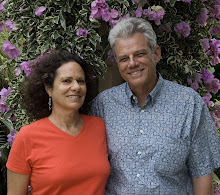Now that Diving Indonesia’s Bird’s Head Seascape, the new guidebook we produced for Conservation International, is complete and now available, it’s time to think about diving again. (BTW, you can order the book directly from our website, www.secretseavisions.com. Just go to the “Books” tab and then click on “fishID” to order. If you prefer, you can order it from Amazon, but it will be drop shipped from "fishID" so save time and order it from them.) The book has received rave reviews. See Drew Wongs’s on Wet Pixel, http://wetpixel.com/i.php/full/diving-indonesias-birds-head-seascape-a-book-review. As Drew will tell you, the book is a must have for anyone visiting the region and for all fans of underwater photography. For those of you with divers or photography lovers on your Christmas list this book is the perfect gift.
Our 2012 and 2013 trips have been sold out for months, so for 2013 we have decided to add a land-based trip to Lembeh Strait and go critter hunting. We will be staying at our favorite resort in the Strait, Lembeh Resort. Just to make it more fun, especially for you nudibranch aficionados, we have asked one of the world’s leading “branchsperts” Dr. Dave Behrens to join us. Dave has written numerous books and identified more species of nudibranchs than just about anyone. Dave will give informal talks and be on hand to help with identifying new specimens. And yes, we will find new species. The divemasters at Lembeh are some of the best on the planet. They will amaze you with their ability to spot these spectacular animals, plus all the other critters that Lembeh is famous for, like Rhinopias scorpionfish and mimic octopus, to name but a few.
Join us in Lembeh June 28-July 8, 2013. Check out our web site for more details.
In 2014, some of our most exciting news is that we will be teaming up with Kerri Bingham and Hergen Spalink for some of our trips. If you’ve dived Indonesia, especially Lembeh, you probably are aware of Kerri and Herg. We were very impressed with them and their skills when we met during their stint as the cruise directors with Kararu Dive Voyages. For the last 3 years they have been the dive-ops managers at Lembeh Resort. They are super people, both of them have incredibly engaging personalities, are very talented photographers, critter spotters, group leaders, and we just love diving with Kerri and Herg.
In 2014 we have decided to spread our wings a bit and visit a destination that, believe it or not, is not in Indonesia. Our first trip with Kerri and Herg will be aboard World Wide Dive and Sail’s (the Siren fleet) new liveaboard in Palau. Palau was the first place we dived in the Pacific (1982) and we still remember it as being magical and have always wanted to return. We will plan a special itinerary that will incorporate Palau’s famous sites, like Blue Corner, with seldom visited, off the beaten track, sites. If you’ve never been to Palau or, like us, haven’t visited for over 30 years, this will be your chance.
The dates for our Palau charter are March 29-April 8, 2014. Look at our website for more details about this trip.
But, there is no way we can let a year go by without at least one trip to Indonesia. Keri and Herg suggested that we give all of you the opportunity to experience what we’ve been doing, virtually alone, for all these years. Exploring, finding new dive sites, and developing new itineraries is what we do best. So we’ve targeted a region we’ve all wanted to explore, the Forgotten Islands, which inscribe eastern Indonesia’s southeast Banda Sea. Names like Babar, Wetar, and Tanimbar should come to mind by those who have read Rudyard Kipling’s fascinating stories. This trip will combine known sites in the central Banda Sea and eastern Nusa Tenggara, with never before dived sites throughout this vast region. We’ll dive with sea snakes at Manuk, perhaps get lost in a huge school of barracuda off Fadol or simply marvel at the sites around the island of Dai.
We have chosen to charter the best boat in Indonesia for an exploratory adventure, the MV Pindito. Edi Frommenwiler, Pindito’s owner, is a legend. Aboard Pindito he pioneered virtually all of Indonesia’s most famous dive regions, but Edi has never been to the Forgotten Islands. (For more about Edi and his impact on Indonesian diving read the dedication, page 30, in our first guidebook, Diving Indonesia’s Raja Ampat.)
Join our team on this journey and experience what few others have ever seen while we discover a whole new world of diving. This will be a once in a lifetime opportunity and the trips are sure to sell out quickly. Book this trip soon and experience the thrill of exploration with us.
HO³,
Burt and Maurine






